A confluence of forces continues to spur international search and rescue missions. As global warming melts ice caps and provokes erratic weather, Arctic rescue teams have seen demand for their services double.
Meanwhile, stricter International Air Transportation Association (IATA) guidelines and an International Maritime Dangerous Goods (IMDG) code have attempted to minimize catastrophes resulting from the transportation of hazardous materials. Companies must be careful in choosing quality packaging, shipping, and handling companies to avoid disasters.
In recent years, mismanaged shipments onboard transportation vessels have been linked to many accidents, prompting search and rescue missions with help from the International Aeronautical and Maritime Search and Rescue Manual.
Over the past five years, several search and rescue operations have captured the international spotlight. Furthermore, the common aspects of these missions have caused a significant degree of examination into international operations—and some of them have even sparked change.

Malaysia Airlines Flight 370 goes missing.
The disappearance of Malaysia Airlines Flight 370 represents perhaps the most publicized search and rescue operation of the past five years. Yet, despite the most expensive search effort ever undertaken, the circumstances surrounding the incident remain shrouded behind a veil of mystery.
Malaysian Airlines Flight 370 departed early in the morning on March 8th, 2014, as part of a routinely scheduled flight between Kuala Lumpur, Malaysia and Beijing, China. The plane’s route would cross both the South China Sea and the Gulf of Thailand before flying over Vietnam into China. Over the South China Sea, things began to go seriously awry.

Sequence of events—Communication loss:
For the first hour after takeoff, air traffic controllers detected no sign of abnormalities, and the flight continued under auspicious conditions. As Flight 370 started to cross the South China Sea, air traffic control conducted its last verbal communication with the aircraft.
Protocol for this routinely scheduled flight dictated the crew would contact air traffic control in Ho Chi Minh City once the plane entered Vietnamese airspace. When no contact was forthcoming, air traffic control attempted to initiate communication with the plane directly—and failed.
At this point, a nearby aircraft used the international distress signal to communicate with Flight 370—and managed to establish contact. However, the pilot of this aircraft heard only indecipherable mumbling and static.
Sequence of events—Disappearance from radar:
Shortly after Flight 370 ceased communicating, the aircraft vanished from the radar screens of Kuala Lumpur and Ho Chi Minh air traffic control. In response, air traffic control quickly activated a secondary tracking system that pinpoints the signal emitted by aircraft transponder units. No signal was detected.
This insufficient tracking protocol, as well as the reluctance of countries to disclose military radar information, prompted IATA examinations into more advanced measures to monitor aircraft throughout the flight several months later. The organization formed an expert panel to spearhead this evaluation largely in response to the disappearance of Flight 370; thus, the ripple effects of this disappearance made their first impact on air transport protocol.

However, because Flight 370 represented such a unique case, military radar readings were released without issue. Ordinarily, military organizations keep radar data closely guarded, as the capabilities of a country’s radar system could be readily discerned if such information became general knowledge.
Ultimately, this data determined Flight 370 took a sharp left turn to the Southeast following the loss of transponder function. This rapid change in direction took the plane significantly off its appropriate flight path and even the Malaysian military radar lost track of the flight. The loss of tracking and the unanticipated flight path yielded an impossibly large search radius once the search and rescue mission began—immediately stacking the deck against success.
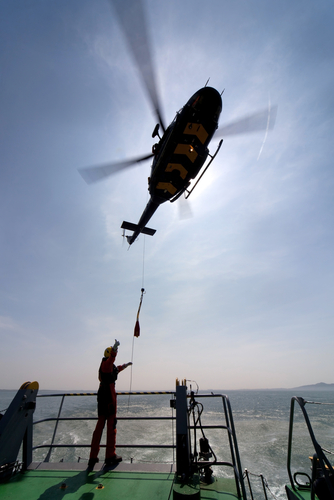 Maritime search patterns up against their greatest challenge:
Maritime search patterns up against their greatest challenge:
In the following days, a multinational search and rescue mission for Flight 370 would be launched. The search process focused initially on Southeast Asia, but, after analyses of available satellite networks determined the flight eventually reached the Indian Ocean, search units shifted their attention there.
Traditionally, in cases where the search object has a known intended route, maritime search protocol would typically employ a Trackline, Single Unit, Return (TSR) vector search pattern—tracing back and forth like a lawnmower between origin and destination. However, the Malaysian flight veered significantly off course when it broke communication. This made approximating its destination impossible, even for Computer-Assisted Search Planning (CASP), which typically coordinates search tactics too complex for manual methods.
During the initial phase of search operations, 118,000 square miles off the southwest Australian coast represented the preliminary search area. However, Australian Prime Minister Tony Abbott deemed the plane likely “as close to nowhere as it’s possible to be,” as that portion of the ocean sported gusting winds, cavernous ocean floors, and rough waves.
Search area expands drastically:
After the first week of using a narrowed search range yielded no success, search vessels broadened the search area significantly. By April 28th, almost two months after Flight 370’s disappearance, 19 ships and 345 aircraft sweeps had conducted a surface search that covered approximately 1.8 million square miles of the Indian Ocean. As a means of comparison, this surface area equates to roughly a third of the entire Arctic Ocean.
Ultimately, limited success prompted the initiation of the final phase of the search and rescue mission for Malaysian Flight 370: underwater search. However, intense efforts to detect underwater locator beacons of the plane also failed to achieve results. Bathymetric survey and sonar technology also provided further means of searching the seafloor—all to no avail.
The hazardous material on Flight 370—Lithium batteries:
While a variety of factors present moderately viable reasons as to why Flight 370 went awry, the most pertinent factor relative to the larger economic climate relates to lithium battery transport.
The IATA considers lithium batteries as hazardous materials and places strict guidelines on their proper transportation. When a lithium battery overheats, it possesses the potential to erupt in flames—a moderate setback when the battery in question powers a cell phone, but a major catastrophe when a plane’s cargo includes almost 500 pounds of lithium batteries. Such was the case for Malaysian Airlines Flight 370.
However, to date, there exists no proof that the batteries contributed to the crash.
The discovery of debris and a potential breakthrough:
Then, in July of 2015, the search’s first major discovery provided a potential breakthrough: the first marine debris from the plane was discovered on Réunion. With the application of reverse drift modeling, the Australian Transport Safety Bureau (ATSB) could theoretically trace the debris back to its origin.
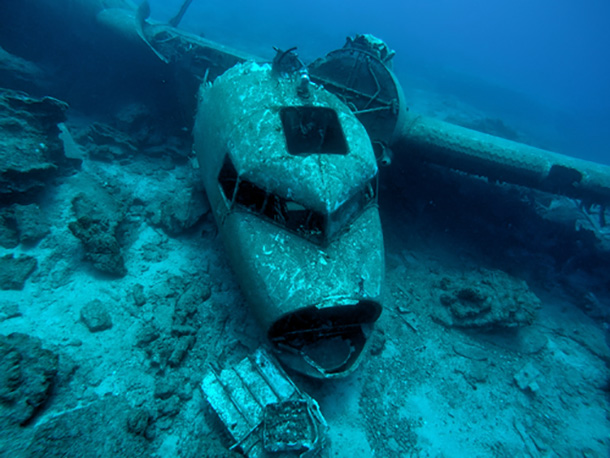
However, when the ATSB ran its diagnostic tests, their results presented a sobering truth. They had been searching in the right area all along—a revelation that simultaneously provided both a small degree of comfort and the evaporation of hope. On January 17th, 2017, Australia, China, and Malaysia—the last three countries actively searching for the aircraft—suspended their search efforts.
Back in June of 2014, Time valued the monetary expenditures for the search effort up to that point at the equivalent of $70 million. By the time all search operations ceased, the bill amounted to over $100 million, warranting the mission recognition as the most expensive aviation search and rescue operation ever.

Politician Pauloosie Keyootak, his son, and his nephew find themselves stranded in the middle of the Arctic tundra.
The test a northern climate poses:
For those in harsh northern climates, global warming continues to melt ice caps and stimulate rapidly changing, erratic weather. This can leave even the most experienced outdoorsman susceptible to the Arctic’s influence.
Pauloosie Keyootak was one such individual. Aside from the demands that accompany a member of the Canadian legislature, Keyootak possessed an active lifestyle in one of Canada’s most remote political constituencies: Nunavut. However, this lifestyle would push him, his son, and his nephew to their limits when they found themselves stranded on Arctic tundra for a full eight days—in the midst of a snowstorm.
Lost in an Arctic snowstorm:
On a relatively routine trip from Iqaluit, Pauloosie and his two young companions embarked on snowmobiles, following a coastline trail that provided a 150-mile route to Pangnirtung. This trip can usually be made in a dozen hours, with cabins sprinkled along the way to provide necessary shelter for such travelers.
During the overnight travel portion of the journey, the three travelers found themselves fighting through impenetrable sheets of snowfall. Doing their best to brave an unanticipated snowstorm—as white walls surrounded them in every direction—the small party succumbed to the disorienting effects of the storm.
By the time they realized what had happened, they had departed from their planned path along the coast and completely lost the trail. The group faced a potentially life-threatening decision: Try to retrace their route to rediscover the trail, or hunker down to avoid the risk of deviating further from the path.
In the end, their supply of fuel made the choice for them: They lacked sufficient gas to do anything but maintain their current position and attempt to subsist on the minimal supplies they had—at least until help came.
Establishing a home base to wait for help:
 Pauloosie quickly set about constructing an igloo, while the boys utilized their own battle-tested survival skills to shoot a caribou. Caribou meat would provide the entirety of their food consumption for the whole eight days, keeping them alive.
Pauloosie quickly set about constructing an igloo, while the boys utilized their own battle-tested survival skills to shoot a caribou. Caribou meat would provide the entirety of their food consumption for the whole eight days, keeping them alive. When the group failed to arrive in Pangnirtung, ground search and rescue dispatched along with the Canadian Armed Forces, two Hercules aircraft, a military helicopter, and a Twin Otter aircraft began searching for the stranded group. These search parties intended to traverse an area of Arctic tundra that encompassed a full 15,000 square kilometers.
Days on the tundra stretch by:
Throughout the eight days, Pauloosie and his companions would venture outside into the sun whenever possible, attempting to maintain a moderate level of activity. In the brutally cold nights, they would escape back inside the protection of the igloo.
Meanwhile, the dispatched search parties had the utmost confidence in finding the group, primarily given the innate ability to survive the elements all residents of the area seemed to possess.
Finally, on the eighth day, the search and rescue party discovered snowmobile tracks leading to the camp of Pauloosie and the boys. To this day, Pauloosie happily admits that first witnessing the Twin Otter approaching his tiny igloo—in the middle of Arctic wasteland—had him crying for joy.

Joe Karetak and his son, Joe Jr., are set adrift on a melting ice cap.
Temperature fluctuations prove dangerous:
National Geographic recently documented the devastating effects of global warming on the lifestyles of Arctic residents, revealing that search and rescue missions had doubled in recent years.
On a particularly warm day in January, Karetak and his son wanted to enjoy the mild weather, which provided a pleasant departure from the traditional Arctic chill. The two had elected to use their boat to hunt seals around the edge of the ice when suddenly an unexpected tide shift pushed them away from the coast.
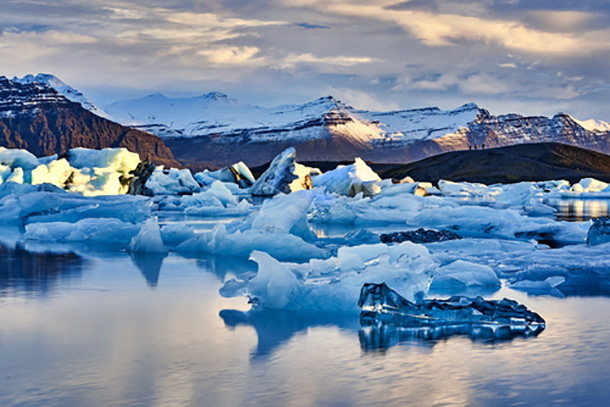
Adrift on the Arctic Ocean:
As they drifted further out to sea, ice-cold waves would careen into their boat, soaking them to the bone. Yet, they were forced to wait until the tide returned them to the coastline now miles away. While they waited, shivering, the temperature started to plummet.
Around sunset, the two of them would find themselves sitting in frozen clothes—their boat still firmly off the coast—with the temperature hovering at a cool 70 degrees Fahrenheit. Luckily, their supplies left back on the main ice cap would prompt the organization of a search and rescue mission.
Gradually, the freezing temperatures became a momentary advantage as new ice began to form on the water, stretching the coastline toward them. As ice froze around the boat, the two quickly jumped on top of the freshly augmented portion of their original ice cap.
Slowly, they began to drag the boat across the ice in that direction. They would be forced to do this all night.
Global warming encourages an unconventional method of Arctic sailing:
Just as Karetak and his son were approaching the main portion of ice—the thick, primary portion that had zero risk of melting—the ice cracked a few hundred yards in front of them. After struggling for nearly 24 hours, the two of them were again set adrift by the Arctic’s erratic behavior.
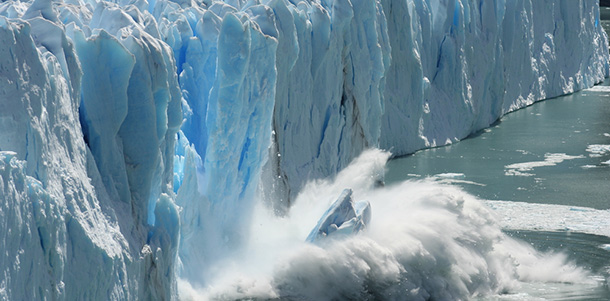
This time, they were in serious trouble. Karetak’s body had gotten especially water-drenched, and his body now began to tremor in an attempt to generate heat. However, shortly after they drifted away on this new ice floe, Karetak could see a rescue helicopter rapidly approaching his location.
An unexpected accident and an ending:
With the helicopter now only a dozen yards from them, a load screech suddenly filled the air. Joe, shivering in a cocoon of frozen clothing, stood helplessly by as he watched broken propeller shrapnel rocketed in all directions—the blade of the helicopter had connected with a chunk of ice.
It took Karetak a split second to realize what was happening, disbelief overwhelming his ability to process the scene. In painful acknowledgment, he could see his rescue vehicle sinking into the Arctic Ocean—all while the pilot tried desperately to evacuate the vehicle and scramble to safety.
Karetak instinctively grabbed an oar as the pilot swam toward the ice floe. Still half-frozen, Karetak struggled to pull him in, but, eventually, the three of them stood huddled together to begin the waiting process anew.
In the end, the three would be rescued the second time without a hitch; however, Joe’s body would continue to battle severe cold intolerance in the coming months. Yet, without much hesitation, he is the first to deem that fateful day a successful search and rescue mission.
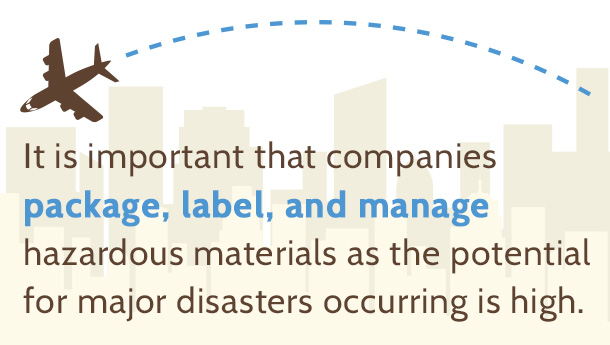
Final Thoughts
Ultimately, the landscape of search and rescue missions continues to change as new elements enter the playing field. It is important that companies package, label, and manage hazardous materials as the potential for major disasters occurring is high.
Improperly managed or stored hazardous materials increasingly generate problems for both air and sea travel, while global warming continues to provoke the environment into radical temperature changes that add to the dangers.
To face these two threats, a large degree of care must be taken by both civilians and corporations. Despite modern technologies, search and rescue missions can only be successful so often.











